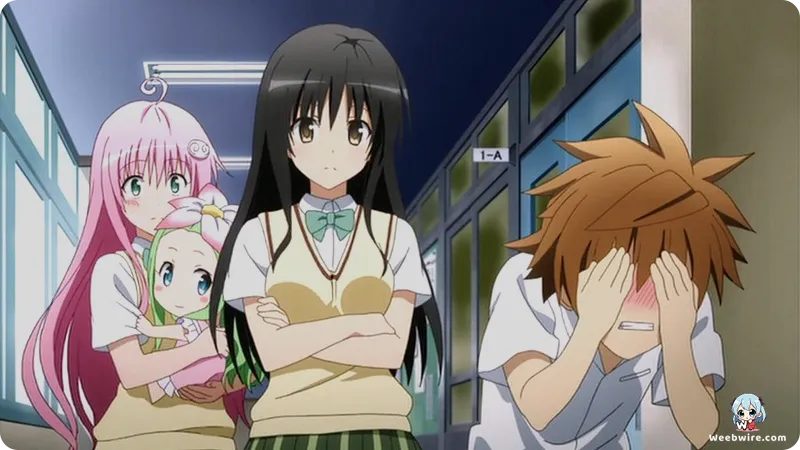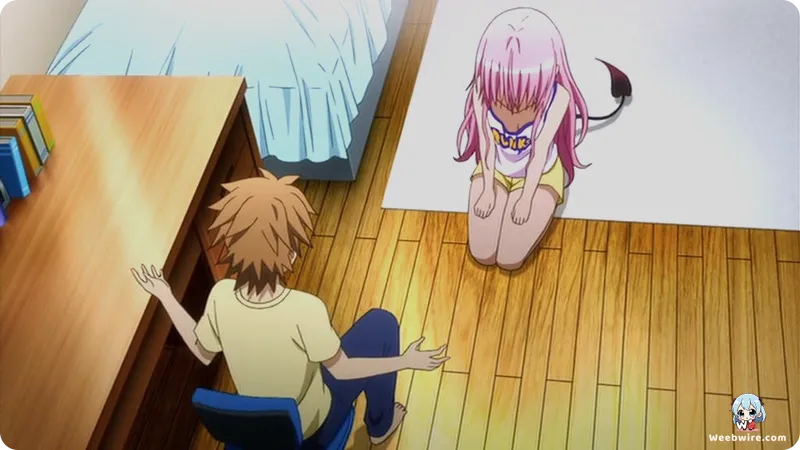To Love Ru: Unveiling the Enduring Appeal and Hidden Depths of a Genre-Defining Series

For over a decade, the vibrant universe of To Love Ru has captivated audiences worldwide, carving out a distinctive niche in the anime landscape with its bold fusion of science fiction, romantic comedy, and ecchi elements. While its reputation often precedes it due to its prominent fanservice, a closer examination reveals a treasure trove of captivating details, profound character arcs, and unexpected narrative intricacies that truly underpin its enduring popularity and comedic brilliance. Far from being merely a typical harem anime, To Love Ru masterfully delves into a nuanced exploration of character dynamics and genre conventions, elevating it beyond its surface-level allure.
Rito Yuuki's Uncanny Luck
At the heart of To Love Ru's uproarious charm lies protagonist Rito Yuuki's almost legendary knack for stumbling into hilariously compromising situations. Affectionately dubbed the "lucky pervert" trope, Rito's uncanny ability to trip, fall, or accidentally land on female characters in suggestive poses isn't just a recurring gag; it serves as the series' most consistent and ingenious comedic engine. This isn't random happenstance; it's an elevated comedic art form, frequently acting as the primary catalyst for pivotal character interactions, delightful misunderstandings, and the intricate progression of various romantic subplots. Rather than feeling contrived, these predicaments have become an anticipated and cherished hallmark of the series' charm, showcasing a remarkable self-awareness regarding genre conventions.
Lala's Inventive Chaos
Much of the series' delightful chaos is often sparked by Lala Satalin Deviluke, the spirited alien princess whose well-intentioned but frequently catastrophic inventions propel significant portions of the plot's comedic momentum. Her advanced Devilukean gadgets invariably backfire with spectacularly amusing results, leading to bizarre transformations, accidental teleportations, or unforeseen consequences that plunge Rito's already complicated life into further disarray. From a device intended for thought translation that instead reveals innermost desires, to a cleaning machine that spawns sentient, destructive dust bunnies, Lala's creations stand as a testament to the series' unwavering commitment to unpredictable, sci-fi infused humor. These ingenious contraptions vividly underscore her unique alien logic and endearingly naive personality, solidifying her as an endlessly entertaining character.
The Evolution of Golden Darkness
Another profoundly compelling facet of To Love Ru is the remarkable character evolution of Golden Darkness, widely known as Yami. Initially introduced as a stoic, emotionless assassin dispatched to eliminate Lala, Yami embarks on a profound and heartwarming journey of transformation. Her gradual shift from a cold killer to a character who slowly opens up, forges genuine emotional bonds, and experiences a wider spectrum of human emotions represents one of the series' most touching arcs. A charming, lesser-known detail about Yami is her unexpected and utterly endearing fondness for taiyaki, the beloved fish-shaped Japanese cake. This seemingly minor quirk provides a delightful humanizing touch to her formidable persona, becoming a recurring motif that softens her image and cements her place in fans' hearts.

Momo's Audacious Harem Plan
Adding another distinctive layer to the harem genre is Momo Belia Deviluke, Lala's younger sister, with her audacious "harem plan." Diverging from typical harem protagonists who passively attract love interests, Momo actively orchestrates scenarios designed to encourage Rito to embrace a polyamorous relationship with all the girls, including herself. Her reasoning is surprisingly pragmatic: she believes Rito embracing such a dynamic would ensure Lala's perpetual happiness and secure her future on Earth. This proactive and somewhat meta-commentary on the harem trope brilliantly subverts expectations, establishing Momo as a cunning and exceptionally entertaining character who takes decisive agency in shaping the series' intricate romantic dynamics.
Kentaro Yabuki's Artistic Vision
The undeniable artistic mastery behind To Love Ru is intrinsically linked to the renowned manga artist Kentaro Yabuki. Prior to his foray into the ecchi romantic comedy of To Love Ru, Yabuki was primarily acclaimed for his work on the shonen action series Black Cat. His seamless transition to To Love Ru powerfully showcased his remarkable versatility and unparalleled mastery of character design, particularly his ability to convey dynamic expressions and meticulously detailed anatomies perfectly suited for the series' unique genre. Fans consistently laud Yabuki's talent for balancing exhilarating action sequences with delicate, emotionally resonant character moments a skill meticulously honed throughout both his major works. His distinct and iconic art style has become synonymous with the series' visual identity, contributing immensely to its widespread appeal.
Xebec's Enduring Legacy
The animation studio Xebec, responsible for the initial To Love Ru anime adaptation, also holds a significant and cherished place in the series' enduring legacy. Xebec was celebrated for its exceptional proficiency in animating both action-packed series and those rich in ecchi elements. They flawlessly translated Yabuki's intricate manga art into fluid, expressive animation, expertly capturing the precise comedic timing and unique character quirks that defined the series. Although Xebec later ceased operations, with certain assets and staff transitioning to Production I.G's new studio, Production I.G. Xebec, their foundational work on To Love Ru stands as a powerful testament to their animation quality and their remarkable capacity to breathe life into even the most outlandish concepts on screen.
Beyond Fanservice: To Love Ru's True Charm
The lasting allure of To Love Ru transcends mere fanservice; it lies in its consistent ability to deliver genuine laughter, surprising plot twists, and a cast of characters who, despite their exaggerated traits, possess surprising depth and genuine relatability. The series skillfully navigates the delicate balance between gratuitousness and comedic brilliance, unequivocally proving that a series can be both ecchi and profoundly engaging. The subsequent series, To Love Ru Darkness, further expanded this vibrant universe, delving even deeper into character backstories and complex relationships while pushing the boundaries of its genre, firmly solidifying its status as a beloved and influential franchise. In conclusion, To Love Ru is a series brimming with captivating details, from its innovative take on common tropes to the intricate development of its diverse cast. Its legacy is built upon more than just visual appeal; it's a powerful testament to clever writing, dynamic character interactions, and the masterful artistic vision that brought this chaotic yet charming universe vividly to life. These hidden gems and meticulously crafted elements are what truly establish To Love Ru as a memorable and enduring cornerstone in the world of anime.
Credits
To Love Ru
Author
Saki Hasemi (Story) & Kentaro Yabuki (Art)
Cover Art
Kentaro Yabuki
Studio
Xebec
Publisher
Shueisha
Producers





